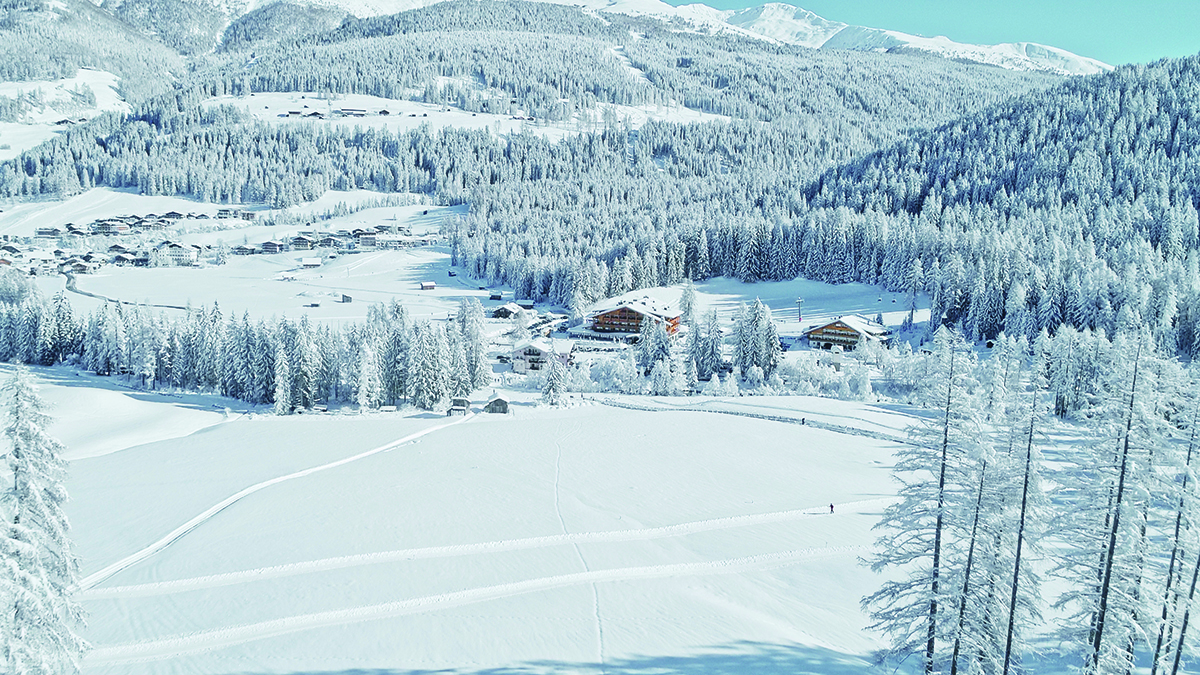
Looking down onto the Bad Moos Dolomites Spa Resort in the Drei Zinnen Dolomites
The little-known area of Drei Zinnen, in the German-speaking Italian Dolomites, offers a cultural, culinary and slopeside experience like no other, as Darius Sanai discovers
‘Atmosphere’ has become an almost meaningless word when describing a place. A hotel describes its bar as “atmospheric” as a matter of course. But a real atmosphere, in terms of travel, is not about a room, or a building, or even a town. It is about a sense of place that is imparted by the location, the light, the scenery, the buildings, the weather, people, detail… Everything.
Some places simply don’t have an atmosphere, and cannot create it however luxurious the hotels, restaurants and facilities they create. Other places have elements of an atmosphere – spectacular views, fascinating buildings – but they do not add up to a whole.
Follow LUX on Instagram: luxthemagazine
And some places have an atmosphere that is more than the sum of its parts, that envelops you as soon as you arrive and increases in intensity the longer you stay.
Drei Zinnen is one of those places. Step out of the car that has whisked you there on a relatively easy drive from Innsbruck airport, and there is the sense of being somewhere quite apart from the rest of the world, yet not secluded, claustrophobic or shut away.
Crunching the few steps in the snow to the door of the hotel Bad Moos, you are in the middle of a wide, high, tree-lined bowl, lined with crannies, streams and villages, and backed by the dramatic fingers of the Dolomites.
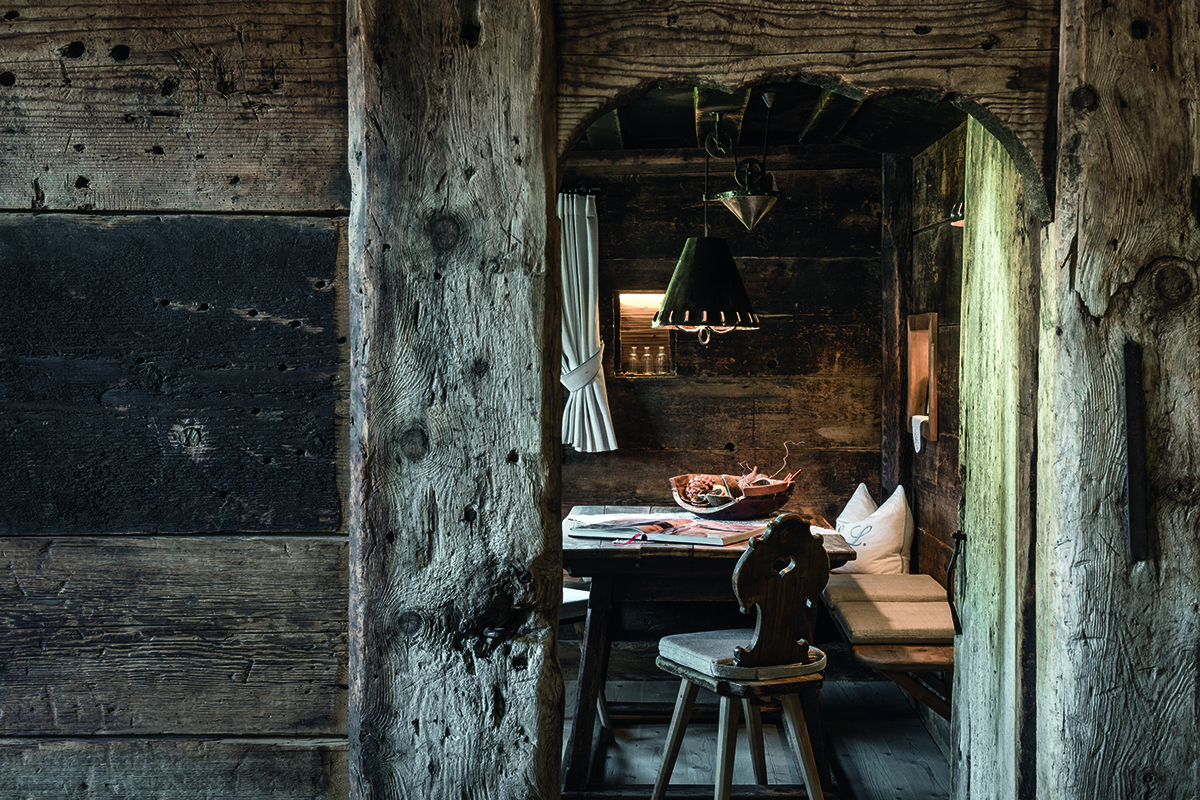
The gothic dining room at Bad Moos. © Hannes Niederkofler
Inside the hotel, the atmosphere is only heightened. This is an exquisitely tasteful, contemporary take on Alpine (or specifically, South Tyrolean) chic. Rooms have lavish wooden floors, fabulous wool throws, beautiful modern fireplaces, glass-walled bathrooms, and finishes and details (the furry slippers!) that puts many more hallowed luxury Alpine hotels to shame.
Read more: Auctioneer & Collector Simon de Pury on curating the Waldorf Astoria’s art collection
A wooden-lined tunnel leads to a spa zone that is split between equally large indoor and outdoor pools, and swimming through the divide that leads outdoors into the moonlit night, surrounded by snow, in winter, there’s that word ‘atmosphere’ again. Lie on the long (everything is done generously here) hydro massage rack at the far end of the pool, look down the broad open valley to the peaks of the Tre Cime mountains in the distance, spot planets and stars overhead above the gently forested slopes, and there is more of a sense of place than in many Alpine resorts.
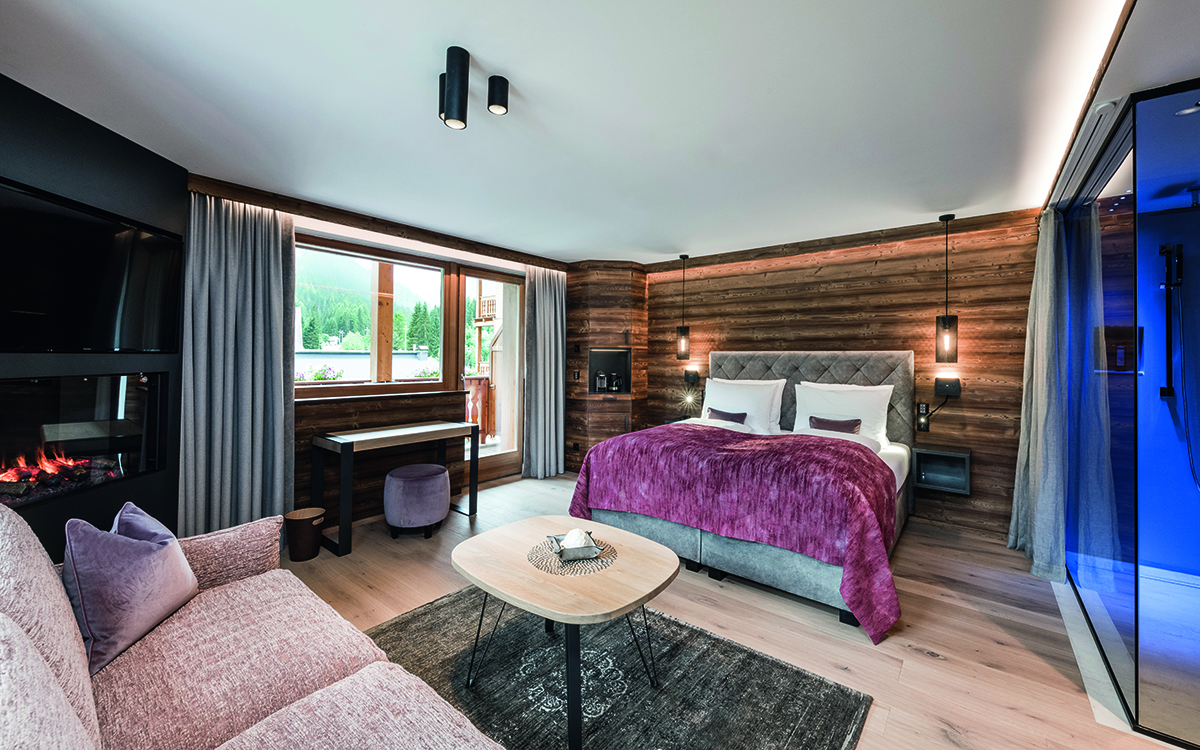
A ‘Tre Cime’ Junior Suite. © Hannes Niederkofler
Wonderful as these facilities are – particularly for a hotel not classified as one of the region’s official palaces, and all the better for it, having none of the pomp and intrusiveness of staff looking down on you – the best part of the Bad Moos experience is in the dining room.
It’s a big area that manages to be spacious (all the best for social distancing this winter) and atmospheric at the same time, split into three broad rooms at slightly different levels. The picture windows have views out over the snow fields and over to the village, a couple of hundred metres away across the bottom of a piste.
The service is a kind of perfect concoction of the best of the Alps. The South Tyrol, where the hotel is located, was part of Austria until the end of the Habsburg Empire at the end of the First World War, just over 100 years ago. It was then taken over by Italy, and has remained in Italy ever since, albeit under an autonomous government. Like everyone else in the area, staff speak both German and Italian. There is an Austrian cosiness, a Germanic efficiency, an Italian sense of style and gastronomy – and generosity of spirit. If delicate Italian fish dishes and perfectly ethereal pasta finished with home-made Austrian strudels and tarts are not your idea of culinary perfection, perhaps a choice of some of the greatest wines of the northern Italian Alps or alternatively an icy Austrian Pilsner beer, is. The cuisine and ambience are simply transported outside onto a generous terrace at lunchtime at the bottom of the piste.
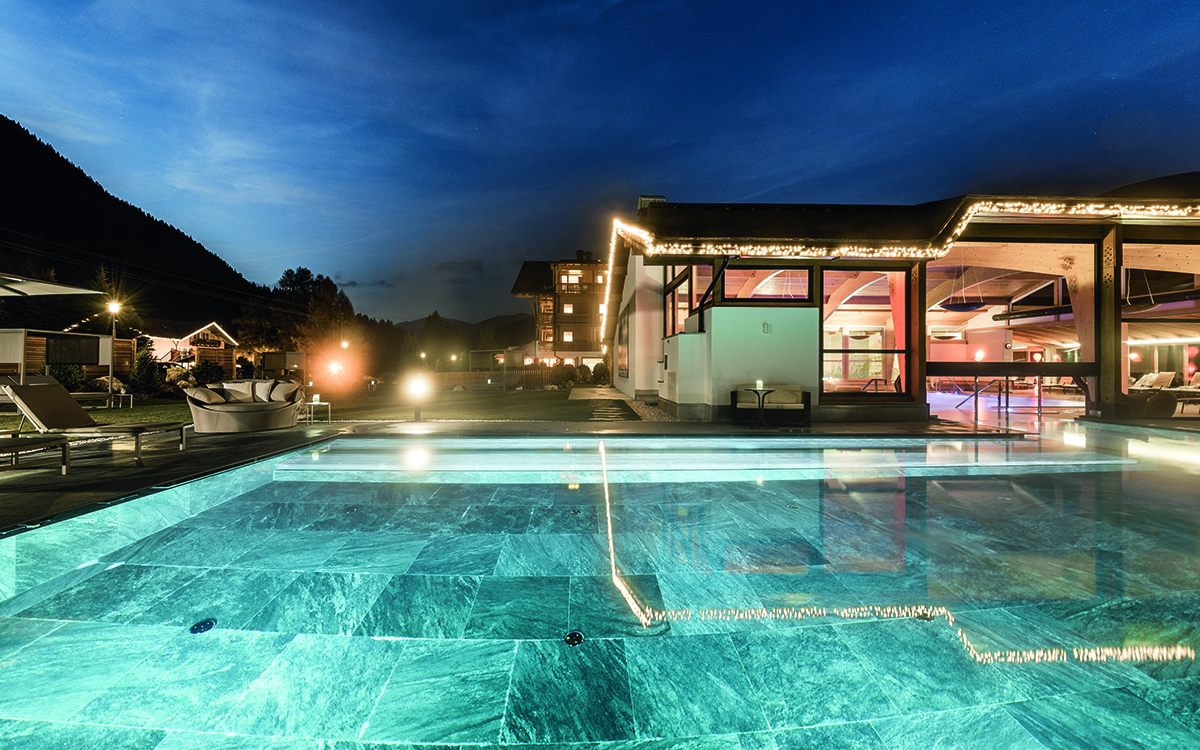
The outdoor pool at the hotel’s spa. © Hannes Niederkofler
Ah, the pistes. It’s easy to forget about the skiing as you enjoy the originality and brilliance of the hotel, but the tree-lined slopes above and around the hotel are deceptively extensive. This is one of the most serious ski areas in the Alps, and the black run descending directly to the hotel terrace via a twist in the mountainside is officially classified as the steepest black run in the Italian Alps. The gondola to send you to the top is located directly outside the terrace; at the top you emerge onto a mountain pass, just above the tree line, with a boggling view of the Dolomites, a range that looks like it has been transported to Europe from another planet.
Read more: Artist Shezad Dawood on the endless potential of virtual reality
From here, you have a choice of entertaining red runs to take you down to a variety of excellent runs on the other side of the huge valley junction; or you can head in the other direction, and set off on the Unesco World Heritage ski trail. This tracks gently across and down the mountainside, through forests and past lakes, with a series of mesmerising views unfolding, seemingly miles from inhabitation or any lifts. You arrive at a small hotel on another mountain pass, with a couple of lifts to take you up, and from where you ski away along the mountain trail again, ending up in a long traverse at the far end of a huge meadow, in a village, Padola, that is not only in a different ski area, but in a different province of Italy, where they speak no German at all. To get back, there is a regular ski bus – although it operates with a more Italian than German concept of regularity, and it would be worth checking this season how it will operate if there are social distancing requirements still in place.
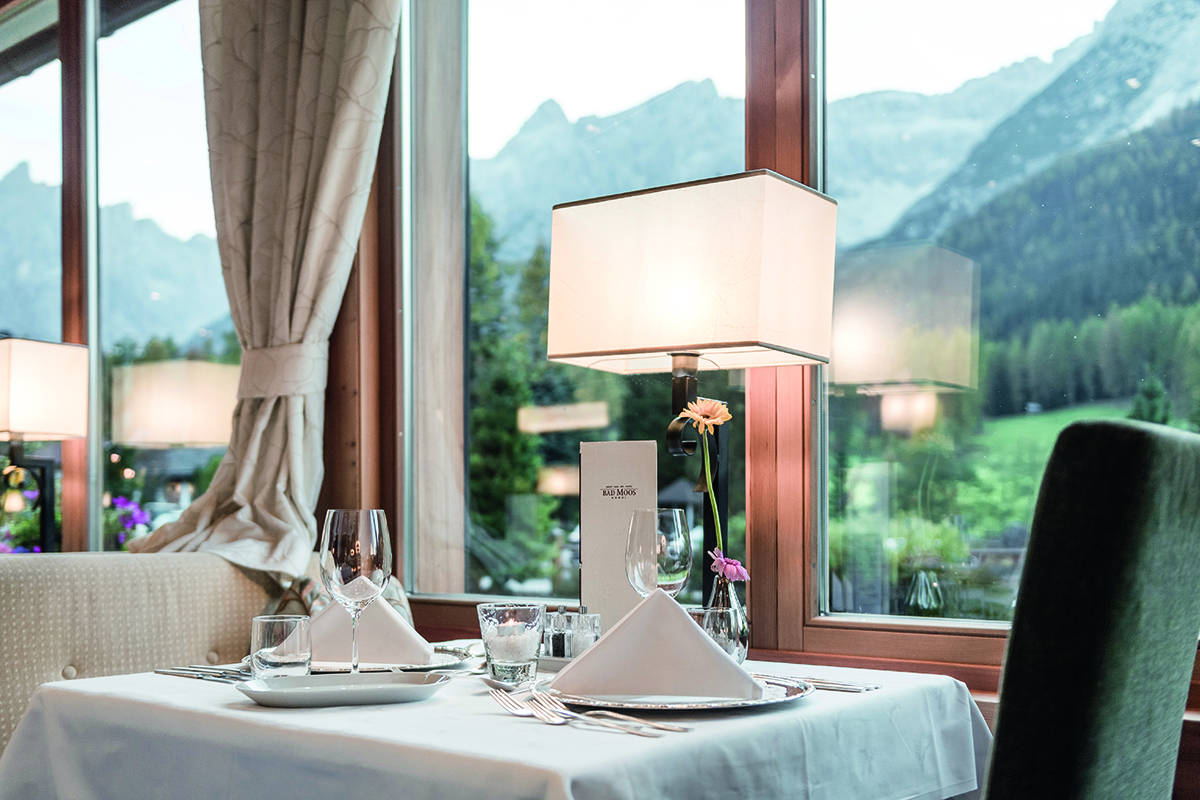
The panorama restaurant. © Hannes Niederkofler
If you’re looking for a replica of Courchevel or Verbier with sushi bars and nightclubs, and dancing till dawn, Drei Zinnen is not for you. And if you’re looking for a place to take the family and friends on an easy ski holiday with everything immediately at hand, then it’s probably not for you either – try Meribel. Which may sound strange, but let me explain. On our third day, as the sun was heading towards the crest of the mountains after another day of blue sky and deep snow, I headed, in my moon boots, across the kilometre-wide field separating the hotel from the little village of Moos. (I could have taken the bus, but that would’ve defeated the purpose.) Walking across the field you are surrounded by a 360° amphitheatre of the Dolomites. Such a view in just one of those directions would have been impressive; it was replicated in every direction, and this is at the bottom of the valley, let alone the top.
After 15 minutes, I found myself on the village High Street, and walked past a bakery into what appeared to be a mountain accessory shop but which also had a supermarket sign on it. This was the ‘everything store’ of the village, selling a unique selection of local products (south Tyrol jams, embroidery, cloths) along with high-tech ski gear, and an excellent wine selection, from tiny producers in the local area that sommeliers in Europe’s metropolises would fight over, and local hams and cheeses. Everything was in two languages, German and Italian, and their lack of similarities can make for extra fun: the wine was from the Alto Adige, Italian for Sudtirol (South Tyrol); cured ham was both Speck and Prosciutto; even the area is alternatively called Drei Zinnen or Tre Cime, and the mountain above the village (housing the main ski area) was called Helm until 1918 (and on half the signs) and Monte Elmo since 1918 (and on the other half).
Walking back to the hotel, wine bottles weighing me down, I felt that I had discovered a striking cultural and geographical part of Europe on holiday, and, just coincidentally, enjoyed some of the best and most interesting skiing in the Alps. It is a unique combination, and not for everybody, but true atmosphere rarely is. A place for intermediates, experts – travellers, and connoisseurs.
Drei Zinnen, Italy
We travelled to Drei Zinnen via Innsbruck and a private transfer, with Crystal Ski Holidays, which offers a week’s half board at the Bad Moos Dolomites Spa Resort from £1,165 per person when booked online (based on two adults) including flights from London Gatwick to Innsbruck and transfers. Transfer time from Innsbruck airport is around 90 minutes via an easy, mainly motorway, route.
For more information visit: dreizinnen.com
This article originally appeared in the Autumn/Winter 2020/2021 Issue.

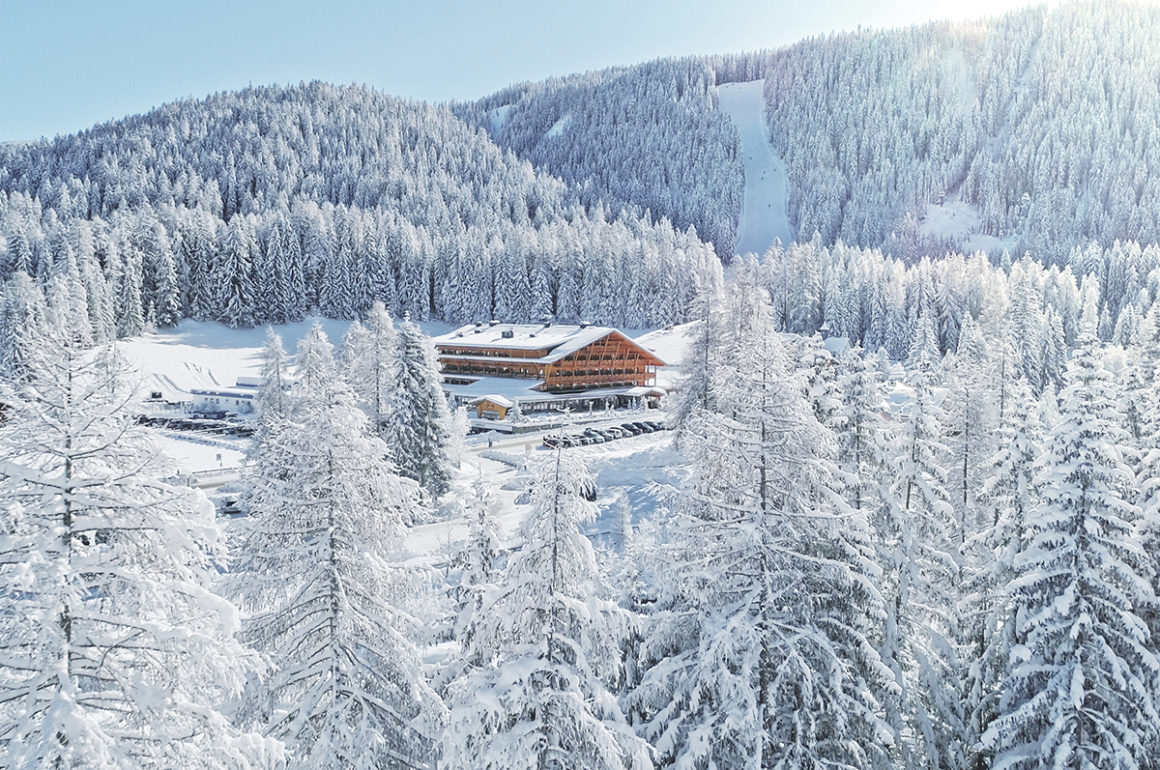
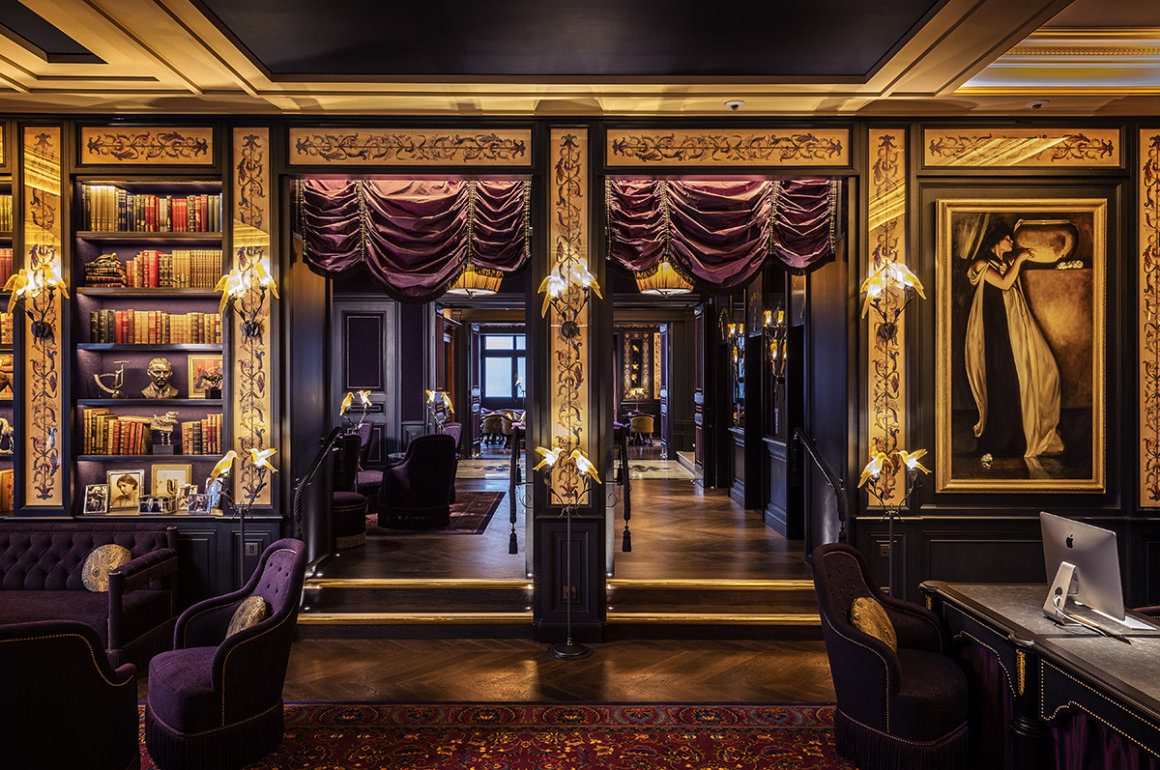
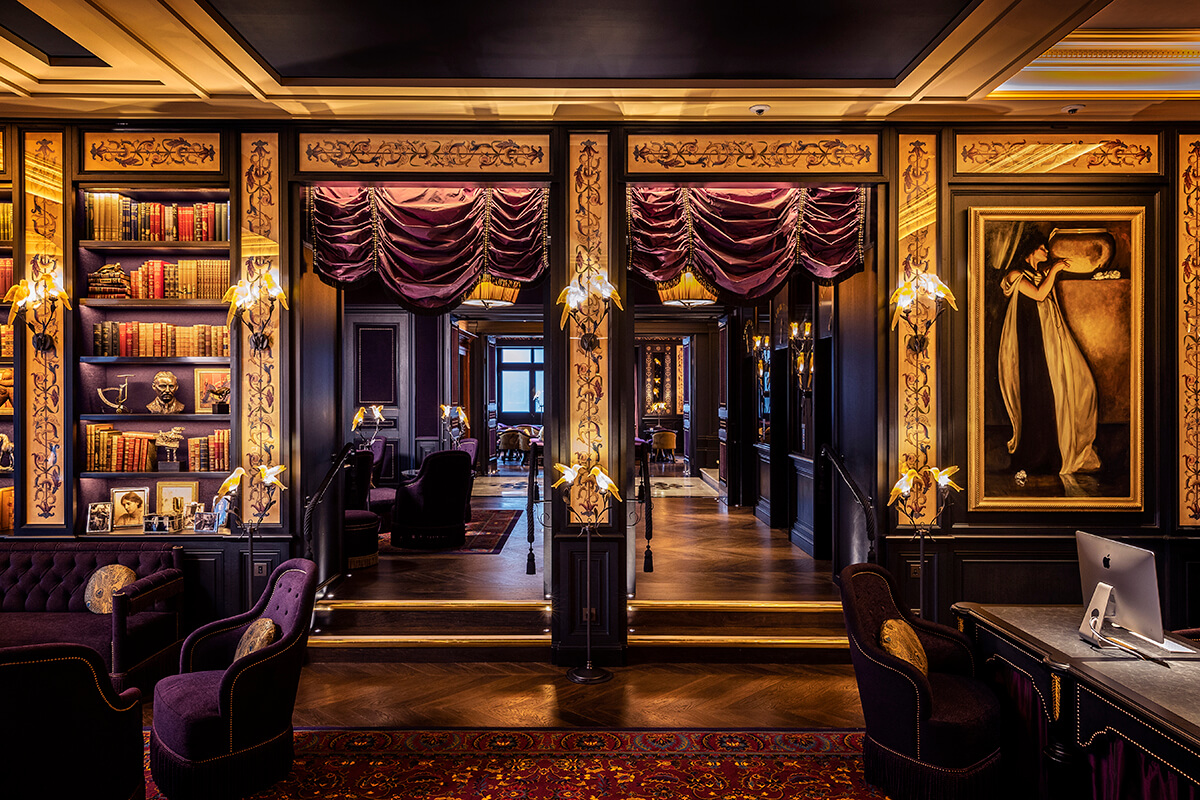
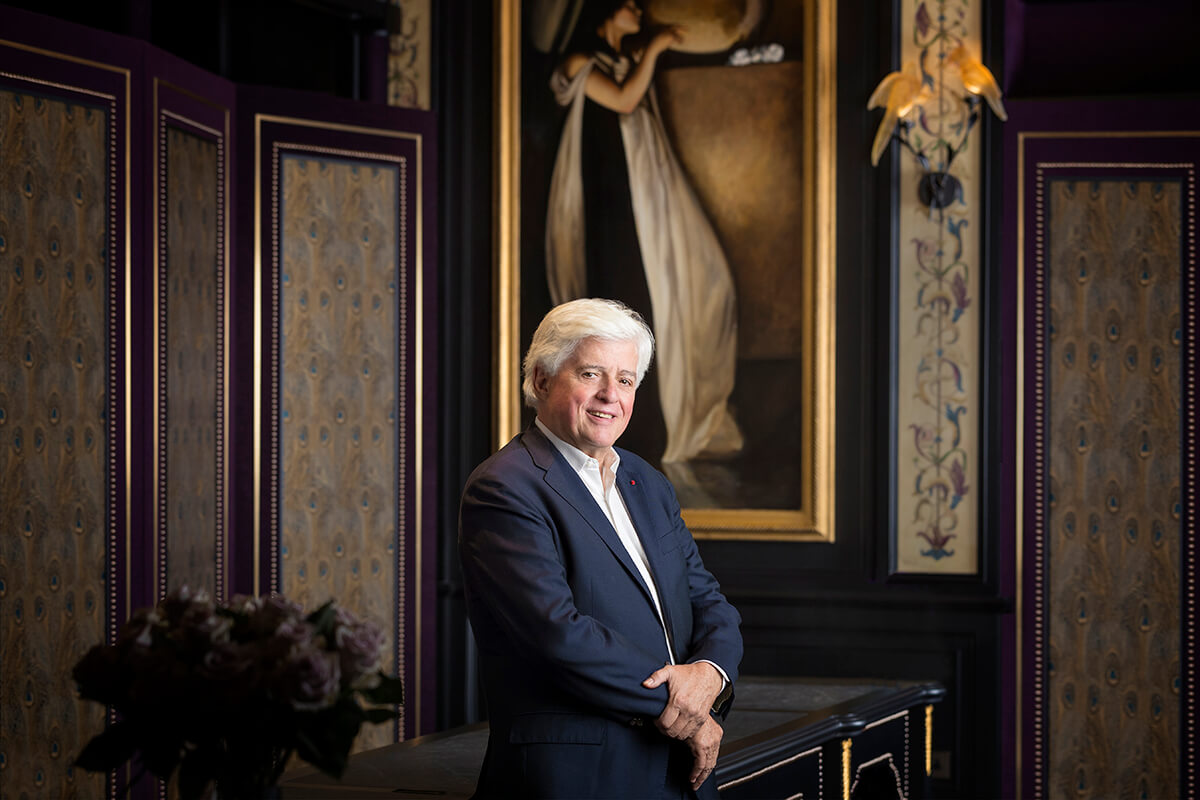
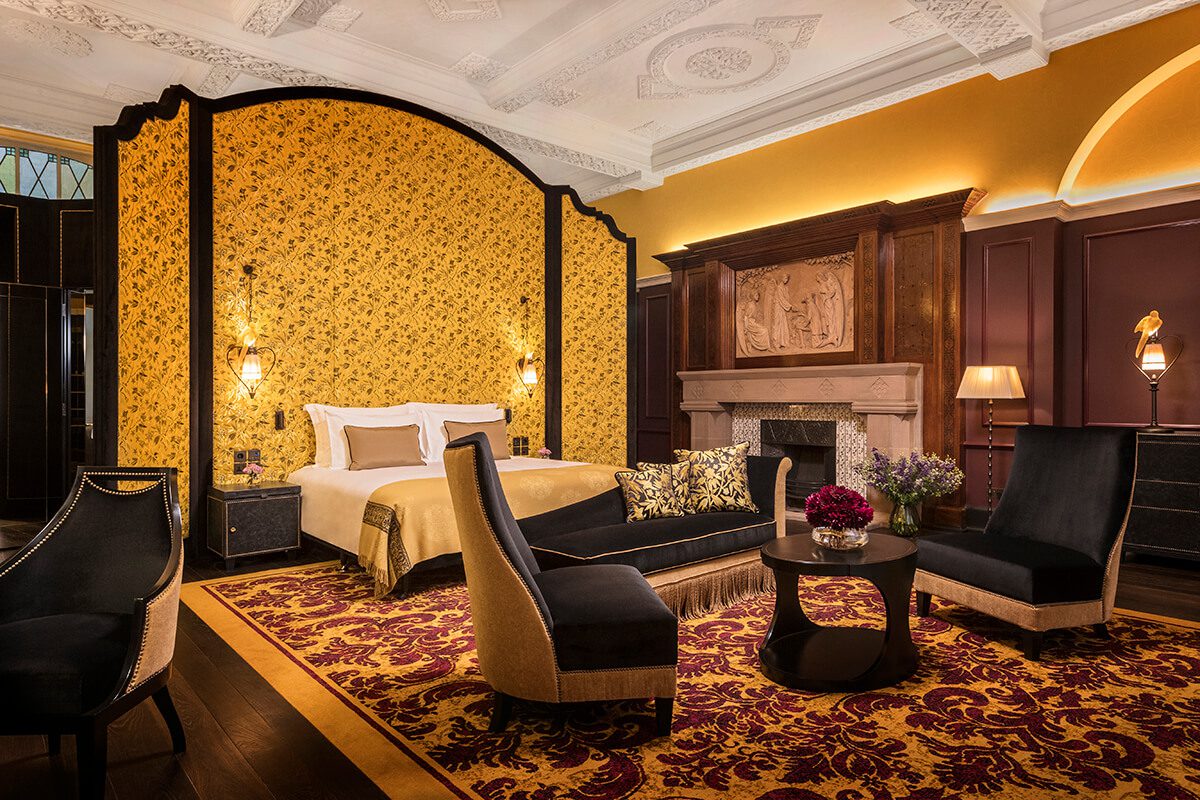
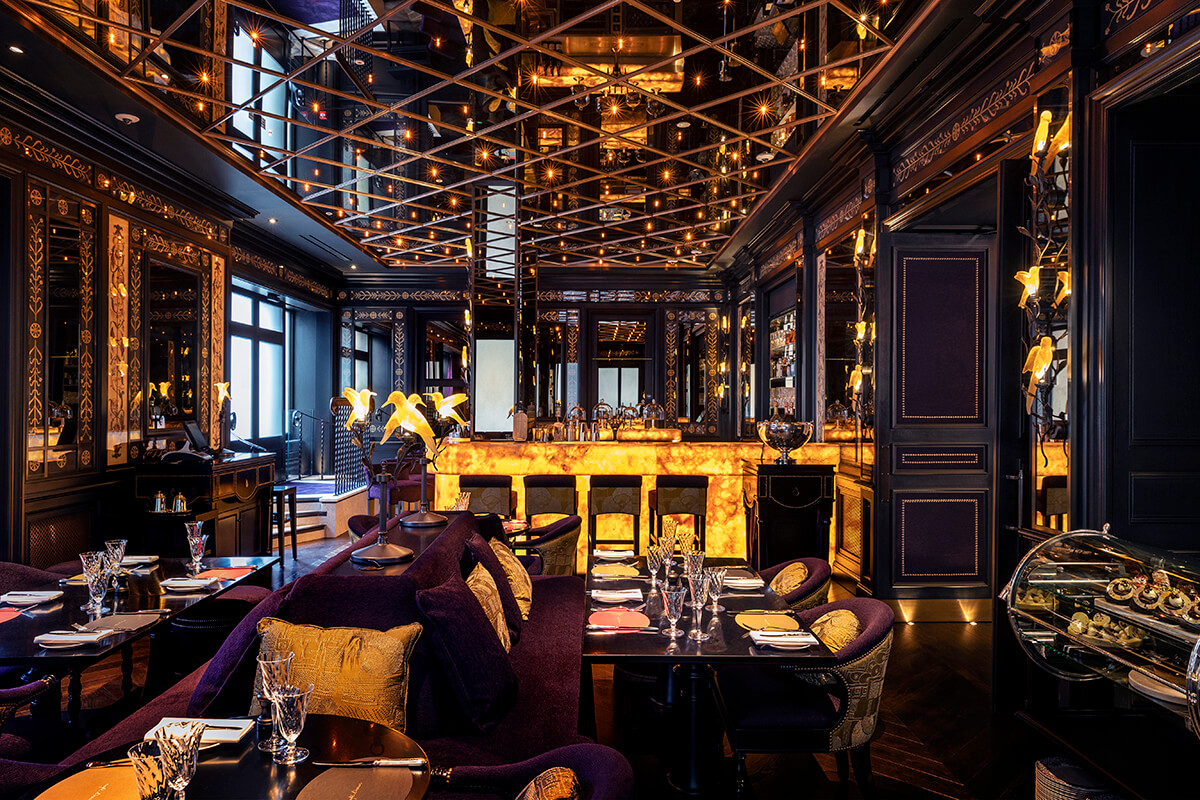
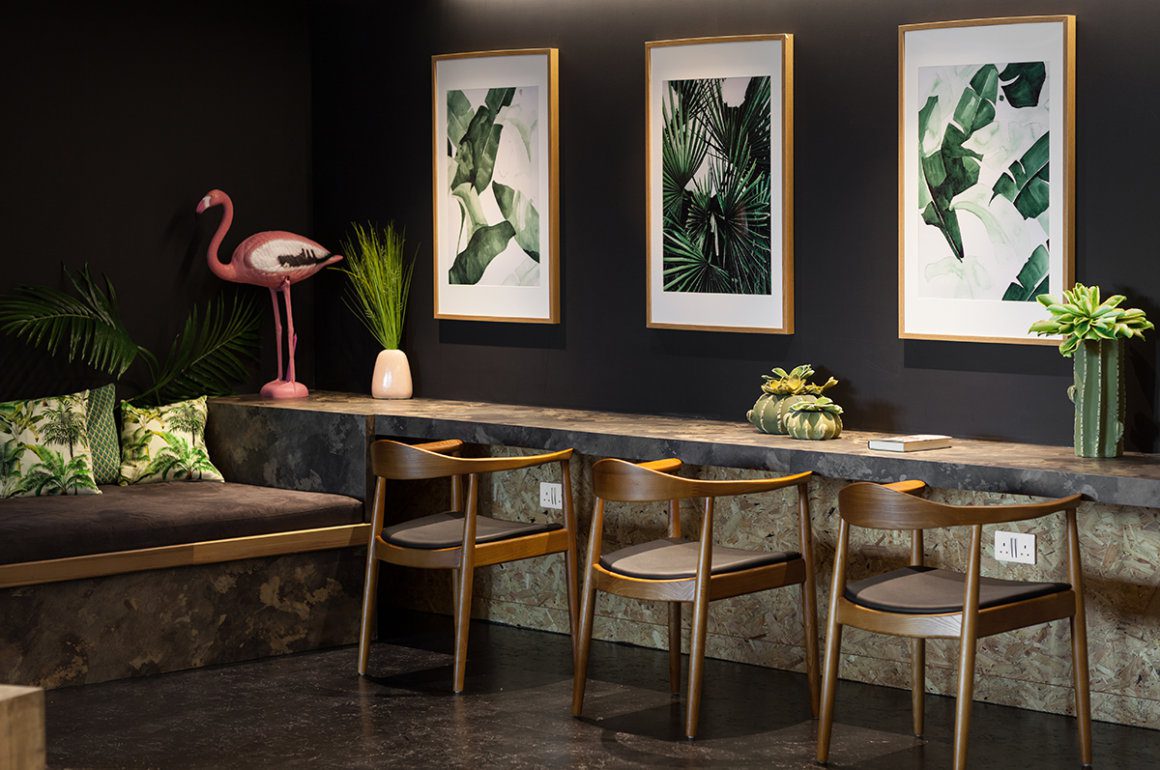
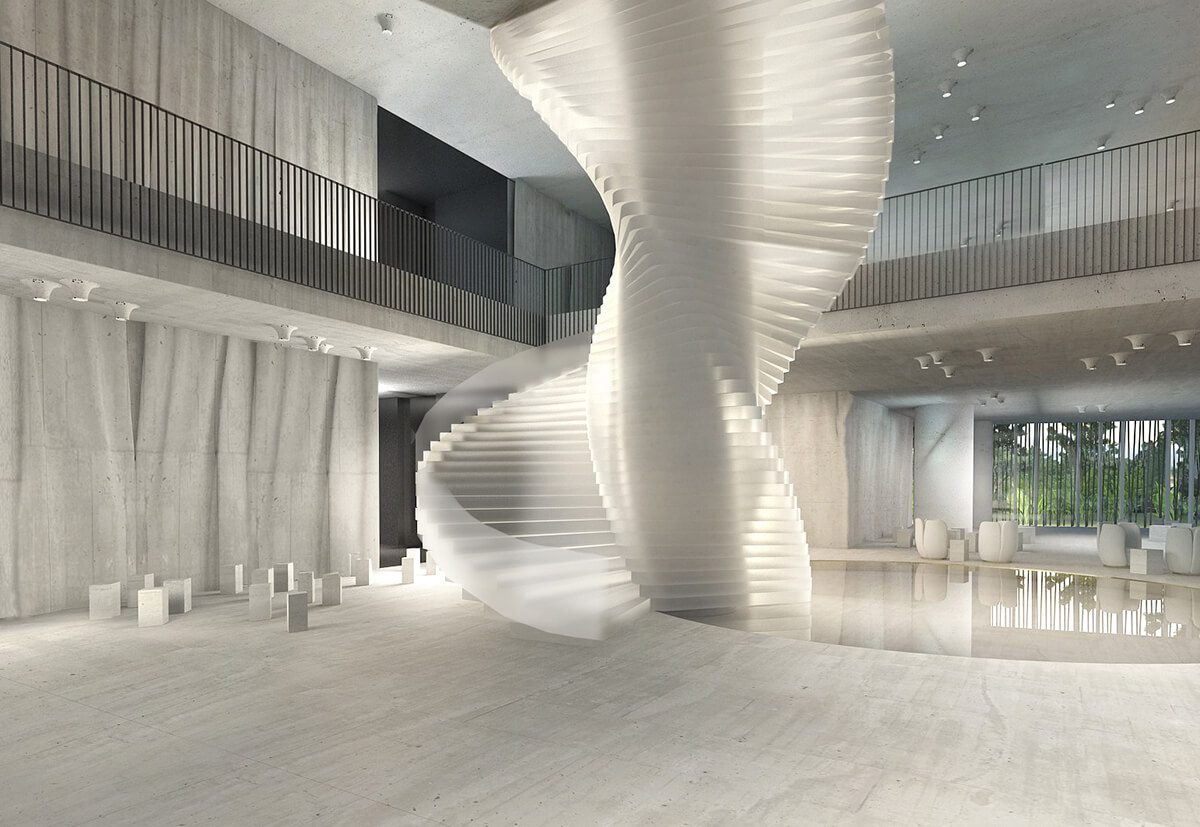

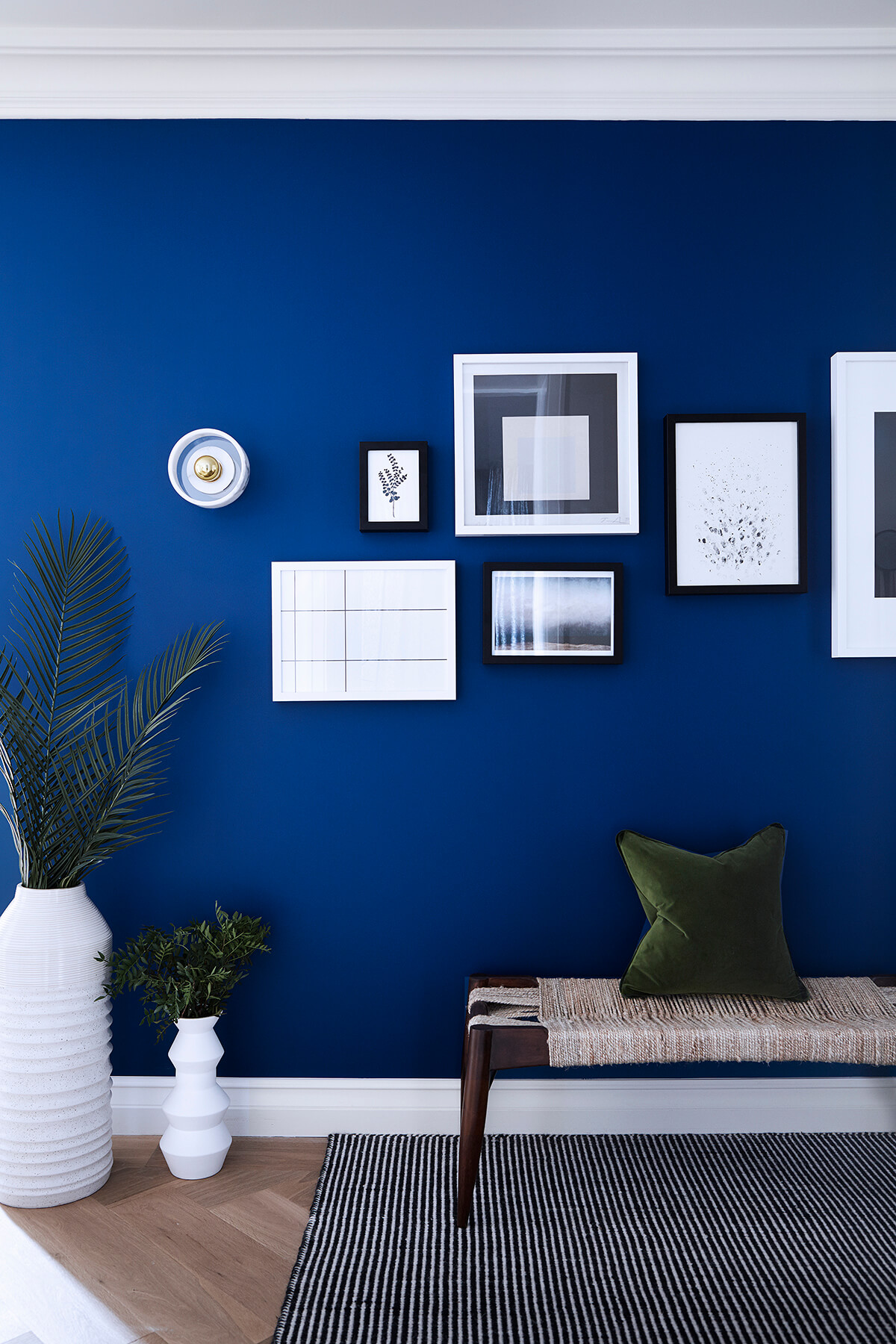
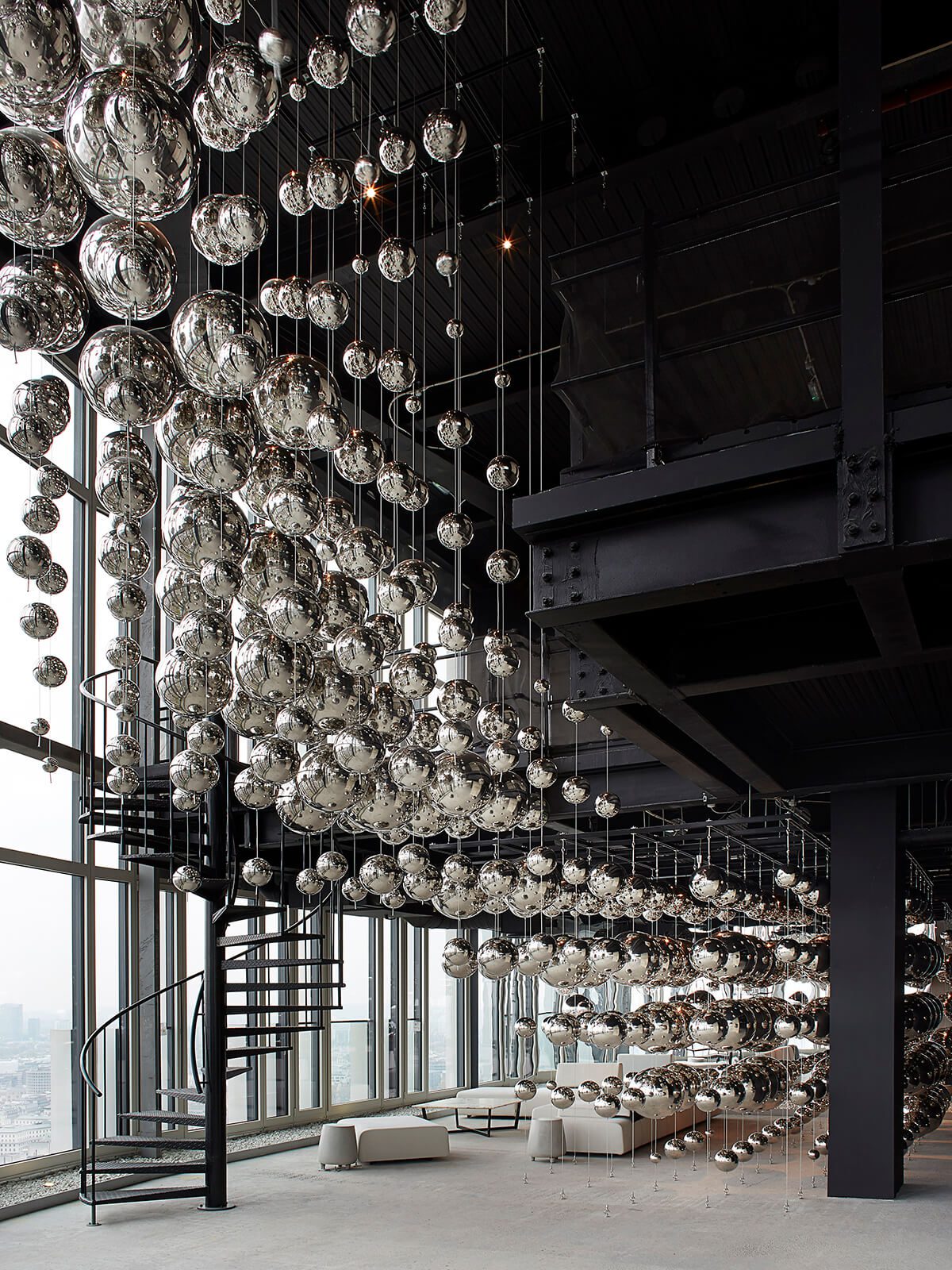





Recent Comments